Ballina Property Market & Location Profile
Focussing on High-Growth Suburbs: East Ballina, Rous Mill, Brooklet & Surrounds
Overview of Ballina and High-Growth Suburbs
Ballina is a coastal town in the Northern Rivers region of New South Wales, serving as the seat of Ballina Shire. It’s known for its laid-back lifestyle, beautiful beaches, and the iconic Richmond River. In recent years, Ballina and its surrounding suburbs have experienced strong property market growth, fueled by an influx of sea-change buyers and retirees drawn to the area’s lifestyle. According to Microburbs data, several Ballina localities are forecast to see particularly high capital growth over the next 4 years – notably East Ballina, Rous Mill, and Brooklet (subscribe to [Microburbs] for detailed forecast data). These forecasts highlight areas expected to outperform, making them prime targets for both investors and home seekers looking for long-term value. In this report, we examine recent property trends, investment potential, economic drivers, liveability, environmental factors, infrastructure developments, demographics, and current affairs shaping the Ballina market in 2025. For updated insights and complete forecast reports, subscribe to [Microburbs].
Recent Property Price Trends and Growth Patterns
Strong Price Growth:
Ballina’s property market has seen robust growth over the past decade. In 2010, the median house price in Ballina Shire was $510,000, and by early 2021 it had climbed to $901,000 – an increase of [subscribe to view historical growth metrics] in 11 years. This upward trajectory accelerated during 2019–2022, as the Northern Rivers region experienced a surge in demand. For example, unit values in Ballina jumped from $450,000 to $650,000 between 2019 and 2024 ([subscribe to view current unit value trends]). House prices in nearby Tweed Heads almost doubled in that five‐year span, reflecting a broader regional boom. Even Lismore (inland from Ballina) was on a similar growth path before the 2022 floods caused a sharp correction – please [subscribe to Microburbs] for the latest comparative regional data.
Current Medians (2024):
As of late 2024, the median house price in Ballina (town) is $872,500, with an annual capital growth of [subscribe for current annual growth figures]. There were 91 house sales in the past 12 months, and the average days on market is 43 days – indicating steady demand. By comparison, East Ballina (a sought‐after coastal suburb) commands a higher median house price of $1.29 million, after significant annual gains (subscribe to [Microburbs] for detailed growth data). East Ballina has seen notable growth in the last quarter (subscribe for the latest quarterly statistics), highlighting its momentum. In contrast, Ballina units have a median of $652,500 and actually saw a slight decline over the past year ([subscribe for current unit market performance data]), suggesting the unit market cooled a bit after earlier gains. East Ballina’s unit median is $780,000, but unit values there showed a notable dip (subscribe to [Microburbs] for a detailed unit analysis). Overall, house prices have held strong, while unit prices show mixed short‐term performance.
Investment Potential and Microburbs Growth Forecasts
East Ballina – Coastal Upside:
East Ballina is highlighted by Microburbs (subscribe to view the four-year growth forecast) reflecting its strong investment appeal. This suburb offers beachfront living (Shelly Beach, Lighthouse Beach), family-friendly amenities, and established infrastructure. Houses in East Ballina not only have shown double-digit annual capital gains recently (subscribe to [Microburbs] for full annual growth details) but also yield strong returns (subscribe for yield details) with median rents of $725/wk – a reasonable return given the high property values. The combination of lifestyle appeal and limited developable land (bordered by the ocean and Richmond River) underpins ongoing potential. Investors can expect a stable market with low vacancy and consistent demand from retirees, professionals, and families wanting to live near the coast.
Rous Mill – Rural Lifestyle and Scarcity:
Rous Mill is a rural hamlet south-west of Ballina, characterized by farmland and acreage homes. Its growth metrics are accessible to subscribers at [Microburbs]. With a median house price of $1,865,000 (subscribe for current YoY data), Rous Mill’s market is driven by tightly held hobby farms, homesteads, and rural retreats. Only a handful of properties sell each year, so competition can be intense when a desirable acreage comes up. The investment potential lies in land value appreciation – as more people look to move inland for privacy and as arable land gains value. Economic factors like the booming macadamia industry in the Northern Rivers and the general desirability of acreage living support values. However, rental yields are not a major factor here (few rentals; mostly owner-occupied farms). Investors interested in Rous Mill are typically land-bankers or those aiming for long-term capital gains as large land parcels become rarer – [subscribe to Microburbs] for complete market insights.
Brooklet – Hinterland Prestige:
Brooklet is another rural locality, located east of Ballina towards the Byron Bay hinterland. It boasts promising potential (subscribe to view the latest forecast) and is known for its picturesque countryside and luxury hinterland homes. Brooklet’s median house value is around $2.1–2.2 million; for a detailed current report, [subscribe to Microburbs]. The suburb’s investment appeal comes from its proximity to Byron Bay (a 15–20 minute drive) but with quieter surroundings. Brooklet offers a hinterland lifestyle (rainforest pockets, creeks, views) that is in high demand among affluent tree-changers and second-home buyers. During the pandemic boom, many properties in Brooklet and nearby localities saw their values skyrocket as wealthy buyers from capital cities snapped up rural estates. While that growth is now reflected in current prices, subscribe to [Microburbs] for further upside forecasts, especially as Byron Bay’s overflow demand continues to benefit Brooklet. One thing to note is that Brooklet’s rental yield is very low – indicative of the high prices relative to rent ([subscribe for the latest yield trends]). Investors considering Brooklet should have a long-term horizon and be mindful that liquidity is low (properties can take longer to sell given the niche market).
Other Areas with Potential:
Beyond these three, other Ballina Shire areas also have strong fundamentals. Lennox Head (just north of Ballina) is a thriving beach town that has seen massive growth in recent years and remains highly desirable for both surfers and families. While its forecast growth may not be as high (since it is already quite expensive), Lennox Head benefits from new infrastructure such as a recent village centre upgrade and continues to attract premium buyers. Cumbalum (Ballina Heights), a newer suburb on the hill above Ballina, is another area to watch – large new housing estates are underway there, offering modern homes and future amenities. For full access to updated forecasts and current data on these areas, [subscribe to Microburbs]. Overall, Ballina Shire’s mix of coastal towns, suburban developments, and rural villages provides options for different investment strategies, but all share in the region’s broad appeal and limited supply. Detailed Microburbs forecasts for areas such as East Ballina, Rous Mill, and Brooklet are available exclusively to subscribers.
Subscribe for Exclusive Microburbs Insights
Microburbs offers a suite of cutting-edge products—including comprehensive Property Reports, an AI-powered Property Finder, the Strategic Suburb Finder, detailed Suburb Reports, and the interactive Suburb DataExplorer. All of these tools are powered by the latest data updated weekly, ensuring you receive the most current insights from Australia’s real estate market. With street-level precision and rigorously tested predictive models, Microburbs equips you with up-to-date forecasts, risk assessments, and key investment metrics. Want to see the detailed forecast for East Ballina, Rous Mill, Brooklet, and other sought-after suburbs? [Subscribe to Microburbs] now and access real-time property insights that help you make informed decisions and stay ahead of the market.
Major Economic Drivers and Employment Trends
Diversified Regional Economy:
Ballina’s economy is robust and diverse for a regional area, which supports its property market. The town functions as a regional service centre for the Northern Rivers, with key industries including health care, retail, education, tourism, construction, and agriculture. In fact, Health Care and Social Assistance is the largest sector, contributing [subscribe for current GRP breakdown] of Ballina Shire’s Gross Regional Product (as of 2012/13). This is driven by the hospital, aged care facilities, and medical services, reflecting Ballina’s popularity among retirees. Other significant contributors to the economy are Construction and Retail Trade – for detailed sector figures, [subscribe to Microburbs]. Education & Training also makes up a significant portion of GRP, with numerous schools and TAFE campuses in the region providing employment.
Tourism and Hospitality:
Tourism is a major economic driver in Ballina Shire, closely tied to the broader Byron Bay tourism market. Ballina boasts pristine beaches, fishing and boating on the Richmond River, and attractions like the “Big Prawn” that draw visitors. Accommodation & Food Services contribute a notable share to local GRP—[subscribe for current tourism data]—and support a significant number of jobs. The Ballina Byron Gateway Airport has significantly boosted tourism, making Ballina a gateway for visitors to Byron Bay and the wider Northern Rivers. The steady flow of tourists supports local businesses year-round and has spurred growth in short-term rental investments and holiday homes, though this has also raised housing affordability issues for locals.
Agriculture and Industry:
In the hinterland areas around Rous Mill and Brooklet, agriculture remains important. Ballina Shire is part of the “Big Scrub” hinterland famous for macadamia farming – Australia’s biggest macadamia-growing region. Many farms around Brooklet, Rous, and Newrybar produce macadamias, avocados, and other horticultural goods. Agriculture, forestry & fishing contribute a modest share to Ballina’s GRP—[subscribe for detailed agricultural data]. There is limited manufacturing in Ballina, mostly light industry and food processing, given the Shire’s focus on services and lifestyle. Unique industrial segments, such as boat building and marine services, also play a role due to the Richmond River access and local demand for marine craft.
Employment and Resilience:
Ballina enjoys relatively low unemployment, historically outperforming the broader region. In late 2013, Ballina Shire’s unemployment rate was 4.8%—a figure that continues to compare favourably with regional averages ([subscribe for updated employment figures]). Despite cyclical fluctuations, the presence of diverse employment sectors and proximity to larger job centres helps keep local job growth stable. The economy has proven resilient through recent challenges—for example, Ballina recorded positive economic growth during challenging periods, and rebounded quickly from the COVID-19 impact. For real-time economic data and forecasts, [subscribe to Microburbs].
Liveability: Amenities, Transport, Schools, and Lifestyle
One of Ballina’s strongest drawcards is its high liveability – offering many urban conveniences in a relaxed coastal setting. For those considering living in the area, the town and its surrounds deliver a compelling lifestyle mix:
- Shopping and Dining:
Ballina has ample amenities, including two major shopping centres with supermarkets, boutiques, a cinema, and eateries. In the town centre, there are cafes, restaurants ranging from casual to upscale dining, pubs, and a riverside club. Essential services like banks, pharmacies, and specialty shops are readily available. East Ballina also features a local shopping strip and cafes. Residents benefit from having daily needs nearby, while larger retail options on the Gold Coast are an hour’s drive away. - Schools and Education:
Families are well-served by a range of schools. Public primary schools include Ballina Public, East Ballina Public (in the Angels Beach area), and Southern Cross School (a K-12 campus). Ballina Coast High School is the main public high school, recently established with a modern campus. There are also private and independent schools, such as Xavier Catholic College in Skennars Head, providing secondary education along with several faith-based primary schools. Childcare centres, preschools, TAFE NSW, and a nearby Southern Cross University campus further enrich local educational offerings. - Healthcare:
Ballina has a district hospital providing general medical, emergency, and some specialist services. Along with numerous GP clinics, dental practices, and allied health services, residents have good access to healthcare. Several aged care facilities and retirement villages cater to the older demographic. Plans for new medical centres on Brunswick Street are underway to further bolster service availability. For updated healthcare facility data and access information, [subscribe to Microburbs]. - Transport and Connectivity:
Ballina is highly accessible. The completion of the Pacific Motorway (M1) upgrade in 2020 has reduced travel times – it is now a smooth dual carriageway drive of under 2 hours to Brisbane and 8 hours to Sydney. The Woolgoolga to Ballina highway project bypassed smaller towns and improved safety, with road fatalities dropping significantly since the upgrade began. Residents can easily travel to nearby centres: Byron Bay is 30 minutes north, Lennox Head is 10 minutes away, Lismore is 30 minutes to the west, and the Gold Coast airport is 60 minutes away. Locally, an expanding network of roads, enhanced cycling infrastructure (including a Coastal Recreational Path connecting Ballina with Lennox Head), and improved bus services contribute to efficient connectivity. - Ballina Byron Gateway Airport:
A standout transport asset, the Ballina Byron Gateway Airport is located just 5 km east of the CBD. It offers direct flights to Sydney, Melbourne, and Newcastle (with seasonal services to other cities), handling over 500,000 passengers per year. Ranking among Australia’s busiest airports, and following a recent $20 million upgrade to its terminal and runway, the airport is on track to support up to 900,000 passengers by 2040. For current air travel and airport facility updates, [subscribe to Microburbs]. - Lifestyle and Recreation:
Ballina is often described as having a “holiday every day” vibe because of its abundance of leisure activities. The region offers:- Beaches: East Ballina is home to surf beaches such as Lighthouse Beach, Shelly Beach, and Angels Beach – ideal for surfing, swimming, and beach walks. Lennox Head, with its famous surf break, is nearby. For families seeking calmer waters, Shaws Bay in East Ballina is a protected inlet.
- Richmond River: Central to local lifestyle, the river offers boating, fishing, kayaking, and sunset cruises. Multiple marinas, boat ramps, walking paths, and parks along the riverfront enhance local appeal.
- Parks and Sports: Numerous parks and green spaces are scattered throughout the Shire. East Ballina features large lakeside parks and community green spaces, while well-connected bike paths and sports facilities (including a golf course, tennis courts, swimming complex, and others) cater to active lifestyles.
- Community and Culture:
Local cultural life is vibrant—farmers’ markets, festivals like the Ballina Prawn Festival, fishing tournaments, community art galleries, surf lifesaving clubs, and various local groups contribute to the region’s unique charm.
- Amenity Developments:
Recent upgrades have further boosted liveability. Lennox Head’s town centre underwent a beautification and streetscape enhancement to emphasize its village feel. In Ballina, a new streetscape plan for Main Street has made the CBD more pedestrian-friendly. Council investments in projects like the Tamar Street Bus Interchange upgrade, improvements to Sharpes Beach, and private developments including new cafes and a hotel revamp are also underway. For the very latest amenity developments, [subscribe to Microburbs].
Environmental and Risk Factors (Flood, Climate, Insurance)
While Ballina is an idyllic location, it is important to consider environmental risks associated with coastal and riverine living.
Flood Risk:
Ballina Shire features significant flood-prone areas due to the Richmond River and surrounding low-lying plains. Notably, West Ballina is the primary flood risk area, with parts of it located on flat floodplains just above sea level. In major flood events, water can inundate homes and infrastructure. The catastrophic flood of February 2022 affected much of Ballina, with record Richmond River heights causing widespread inundation. In contrast, East Ballina sits on higher ground with natural sand dune and headland protection, though some access routes were temporarily severed. Critical facilities such as the hospital experienced disruption during flood events. Updated flood studies and mitigation plans are continuously being developed by the council and State Government. For the most current flood maps and risk assessments, [subscribe to Microburbs].
Storms and Coastal Erosion:
As a coastal town, Ballina faces hazards from severe storms and coastal erosion. Past East Coast Low events have occasionally led to erosion at beaches like Shelly Beach. Infrastructure projects like the Ballina rock revetment works are in progress to reinforce coastal defences. With climate change and sea level rise posing future challenges, residents are advised to review updated coastal risk data—available through [subscribe to Microburbs].
Bushfire Risk:
In the rural hinterland, bushfire risk exists where farmlands border forested areas. Although Northern NSW experiences fewer major fires compared to other regions, large rural properties adjacent to eucalypt forests need robust fire management strategies. Following the 2019 Black Summer fires, local fire preparedness has increased. [Subscribe to Microburbs] for up-to-date bushfire risk assessments and recommendations.
Insurance and Climate Impact:
The compounded risks of flood and storm events have led to notable rises in insurance premiums in high-risk areas. Some homeowners in flood zones face substantially higher premiums or even difficulties obtaining coverage. Insurers have re-rated many properties in the Northern Rivers area, underscoring the importance of factoring environmental risk into property decisions. For ongoing updates on insurance trends and climate impact data, [subscribe to Microburbs].
In conclusion, while Ballina offers an exceptional environment, natural hazards remain a factor. Prospective buyers should carefully research specific locations—a home on elevated East Ballina land may face negligible risk, whereas a cottage in West Ballina might require flood insurance and an evacuation plan. Continued climate change may magnify these risks over time, but the market has so far demonstrated resilience, aided by proactive mitigation measures.
Infrastructure Projects and Upcoming Developments
Significant infrastructure investment in and around Ballina has improved connectivity, services, and overall regional appeal. Key highlights include:
- Pacific Highway (M1) Upgrade – Completed:
The completion of the Pacific Highway upgrade from Hexham (Newcastle) to the Queensland border has been a game changer for Ballina. The final section, from Woolgoolga to Ballina, was finished in December 2020, marking the culmination of a 657 km dual-carriageway vision. This $15 billion, multi-decade project has cut travel times and improved safety. For the latest infrastructure investment updates, [subscribe to Microburbs]. - Ballina Bypass and Local Roads:
The Ballina Bypass (completed 2011) diverted heavy traffic from the town centre, enhancing local travel conditions. Local road upgrades continue, such as the widening of Ross Lane between Lennox Head and the highway, and proposals for a new North Creek Bridge to improve access from emerging estates. Additional bridge duplications are planned for better evacuation routes. For current road network and project details, [subscribe to Microburbs]. - Ballina Byron Gateway Airport Upgrades:
Major upgrades at the Ballina Byron Gateway Airport—including runway resurfacing and terminal expansion—have positioned it for increased capacity. Now handling over 500,000 passengers per year and on track to support 900,000 by 2040, the airport upgrade bolsters both tourism and property investment. Future-controlled airspace and further expansion plans underline its growing importance. For updated airport statistics and project news, [subscribe to Microburbs]. - Residential Developments – Cumbalum/Ballina Heights:
To accommodate population growth, new housing land has opened primarily at Cumbalum (north of Ballina, on the plateau west of the highway). The Ballina Heights Estate is a large master-planned community with approximately 750 lots, featuring modern four-bedroom homes, many in elevated positions with ocean glimpses. With future amenities like a local shopping centre, school, and parks planned, these developments will help ease pressure on Ballina’s core township. For real-time updates on residential projects, [subscribe to Microburbs]. - Lennox Head and Alstonville Upgrades:
Outside Ballina, nearby centres such as Lennox Head and Alstonville have benefited from significant investment. Lennox Head recently completed a village centre revitalization—featuring underground power lines, new footpaths, and enhanced landscaping—to boost its boutique and café culture. Alstonville has seen Main Street upgrades and the launch of new commercial spaces to keep local communities vibrant. - Commercial and Industrial Developments:
Ballina is also developing new industrial estates, with council strategies focused on attracting clean industries and expanding the aviation business precinct. A new business park adjacent to the airport is planned to lure logistics and aviation maintenance firms. With continued population growth, additional large-format retail areas and a proposed new medical precinct are also on the horizon. - Future Projects:
Looking ahead, proposals for a world-class marina and mixed-use development on Ballina’s riverfront continue to be explored, aiming to capitalize on marine tourism and upscale residential demand. Enhancements in public transport—such as the potential reintroduction of rail or rapid bus services linking key Northern Rivers towns—are under consideration as part of long-term planning. For comprehensive tracking of upcoming developments, [subscribe to Microburbs].
Population Demographics and Demand Trends
Population Growth:
Ballina Shire’s population is steadily growing at a moderate pace. In 2021 the population was 45,000, and the forecast for 2025 is 49,943 people, with projections reaching 62,300 by 2046. This equates to annual growth of [subscribe for updated demographic trends]. New residents arrive through both natural increase and net migration, illustrated by past growth rates in Ballina town and East Ballina during previous census periods. The COVID period saw an influx of relocations from larger cities, further accelerating demand.
Age Demographics:
Ballina Shire is characterized by an older age profile overall. In Ballina town and East Ballina, the predominant age group is 60–69 years, reflecting the large retiree population drawn by the region’s amenities and lifestyle. In smaller locales like Brooklet, the median age is 52 years. Yet there is also a significant presence of families and younger adults, particularly in East Ballina and Lennox Head—evidenced by rising primary school numbers. For detailed age demographic trends and updates, [subscribe to Microburbs].
Tenure and Housing Demand:
Historically, Ballina has a high rate of owner-occupiers. In East Ballina, 66% of homes were owner-occupied in 2016. While many retirees own their homes outright, investor activity has increased in recent years, particularly with holiday rental properties. Approximately 25–30% of dwellings in the Shire are rentals, and the market is extremely tight with vacancy rates reported at around 1% or less – in one instance, a vacancy rate of 0.6% was observed. In 2022, median weekly rents in Ballina rose from $490 to $650—a 33% increase in five years—indicating strong rental demand that benefits landlords while challenging affordability for locals. For the latest tenure and demand statistics, [subscribe to Microburbs]. Current yields for houses in Ballina stand at 4.2%.
Migration Trends:
Property demand in Ballina is significantly influenced by migration. Key trends include:
• Sea-changers and Retirees – a continuous flow from capital cities and inland areas, attracted by the appealing climate and quality healthcare.
• Interstate Migrants – many relocated from Sydney and Melbourne during the COVID period; remote work now enables professionals to live in Ballina while working elsewhere.
• Within-Region Moves – residents moving from other parts of the Northern Rivers, for example from flood-affected Lismore to more elevated areas in Ballina.
For further details on migration trends and their impact on demand, [subscribe to Microburbs].
Housing Stock and Development:
New housing in Ballina Shire has been added at a measured pace. Dwelling approvals averaged 180 per year in the early 2010s after a previous boom, and new estates in areas such as Cumbalum and Lennox Head help ease supply constraints. Local opposition to overdevelopment has also kept supply limited, which supports property values. Projections from planning authorities indicate that growth may moderate beyond 2016. For up-to-date housing development statistics, [subscribe to Microburbs].
Demand Outlook:
As of 2025, demand remains high for both purchases and rentals. Although rising interest rates during 2022–2023 tempered some investor enthusiasm, properties in Ballina continued to hit record prices into 2023. With interest rates now stabilizing, pent-up demand from 2021 is reawakening, and well-priced properties—especially in East Ballina and Lennox—continue to receive multiple offers. Overall, the sustained population influx and lifestyle migration support long-term housing demand. Projections indicate that the broader Northern Rivers’ population will grow significantly in the coming years, reinforcing robust demand for both owner-occupier and investment properties.
Demographic Highlights:
- Median Age (Ballina Shire): 50 years (notably older than the NSW median of 38).
- Household Income: While many households rely on retirement income or moderate wages, new arrivals often bring higher remote work salaries that boost local spending power ([subscribe for updated income statistics]).
- Cultural Makeup: Predominantly Australian-born (over 80–85%), with a notable UK-born minority and a growing community of expats; Indigenous Australians, including the Bundjalung people, are an important community.
- Community: A mix of longstanding local families and newer arrivals, with some neighborhoods experiencing shorter median lengths of residence.
From an investor’s perspective, these demographics suggest solid end-user demand. An ageing population may drive demand for downsizer homes or accessible units, while an influx of young families supports demand for larger houses near quality schools, creating a balanced and healthy property market.
Current Affairs and Market Outlook 2025
As we move into 2025, several newsworthy factors and prevailing trends are influencing the trajectory of the Ballina property market. These include policy changes, economic conditions, and local sentiments. Key points include:
- Housing Affordability and Policy:
The rapid rise in prices and rents has spurred ongoing debates in NSW about alleviating the housing crisis. Recent proposals are aimed at encouraging more medium-density housing and faster approvals. However, local authorities and communities remain cautious about overdevelopment that could compromise Ballina’s character. This tension—exemplified by controversies over developments in flood-prone areas—suggests that new supply will remain limited, benefiting existing owners but challenging affordability for renters. - Interest Rates and Investor Activity:
The tightening cycle during 2022–2023 saw rates increase from very low levels to current rates ([subscribe for the latest interest rate trends]). In Ballina, where yields are modest, some investors grew more cautious. However, there is optimism that, with rates stabilizing or falling, price growth may resume as more buyers enter the market. - Infrastructure Momentum:
Ongoing improvements—such as the Ballina CBD bus interchange and other civic projects—are contributing to investor confidence by stimulating future growth in key areas. Positive local headlines regarding new retail and commercial investments further signal opportunities on the horizon. - Northern Rivers Housing Forum & Identity:
Recent regional forums have emphasized balancing housing supply with local character preservation. Discussions underline that unchecked price increases could displace long-time residents, triggering demographic concerns similar to other areas in the region. - Insurance and Rebuilding Post-Flood:
One year after the 2022 floods, affected communities are still in recovery mode. Government schemes aimed at retrofitting or repurchasing vulnerable properties are underway. Renovations on flood-damaged homes are restoring and, in some cases, enhancing property values in safer areas, while properties in high-risk zones continue to face subdued prices. - Economic Climate:
National economic conditions—including cost-of-living trends and broader growth—will continue influencing Ballina. A robust economy alongside flourishing tourism is likely to sustain investment and migration, whereas any downturn could temper demand. Low crime rates and relatively affordable living support ongoing growth, though housing affordability remains a challenge for local workers.
Combining these factors, the outlook for Ballina’s property market in 2025 remains cautiously positive. Moderate capital growth—potentially exceeding [subscribe for detailed market growth projections] per annum above inflation—is anticipated, supported by the region’s lifestyle appeal and limited new supply. Rental demand is expected to remain very high, though rapid rent increases could challenge tenant affordability. For full access to real-time market data, forecasts, and detailed analysis, [subscribe to Microburbs].
In summary, Ballina’s property market in 2025 is characterized by strong fundamentals—solid growth, high rental demand, a diversified economy, and improving infrastructure—tempered by environmental risks and affordability challenges. High-growth forecast suburbs such as East Ballina, Rous Mill, and Brooklet exemplify the region’s appeal, whether as a beachside community, a rural retreat, or a Byron-adjacent haven. Balancing these opportunities with inherent risks enables investors and homebuyers to make informed decisions in this vibrant coastal market. Ballina is set to remain a treasured Northern Rivers jewel, sustaining its unique blend of growth and lifestyle appeal.



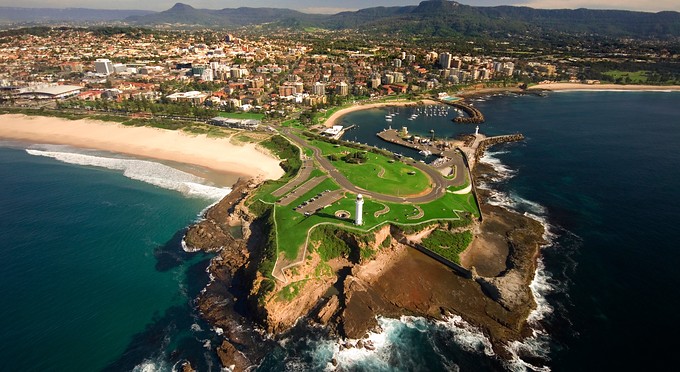
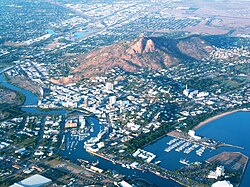

.jpg)
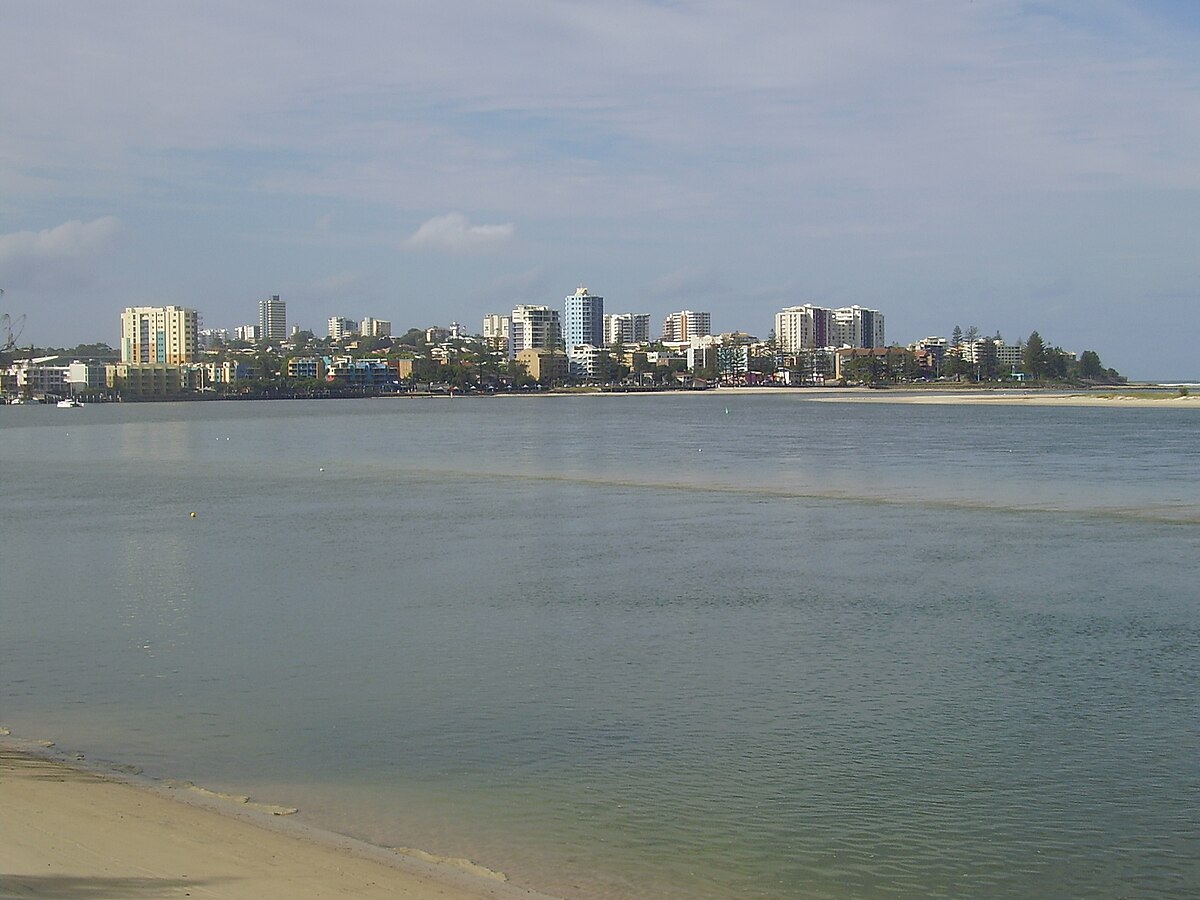

.jpg)
_(7445134654).jpg)
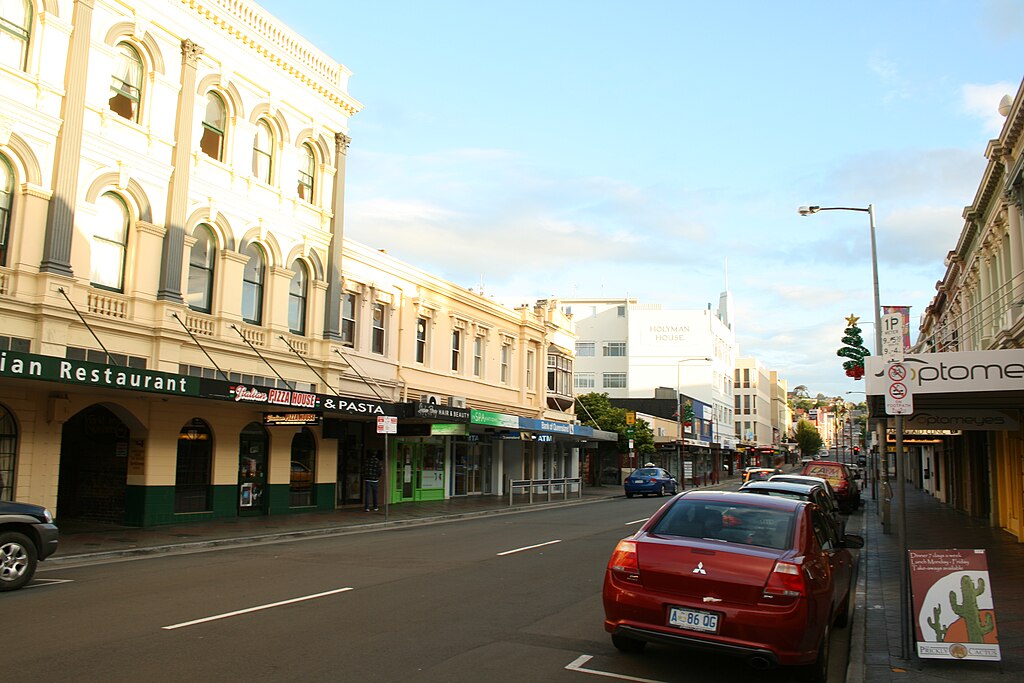

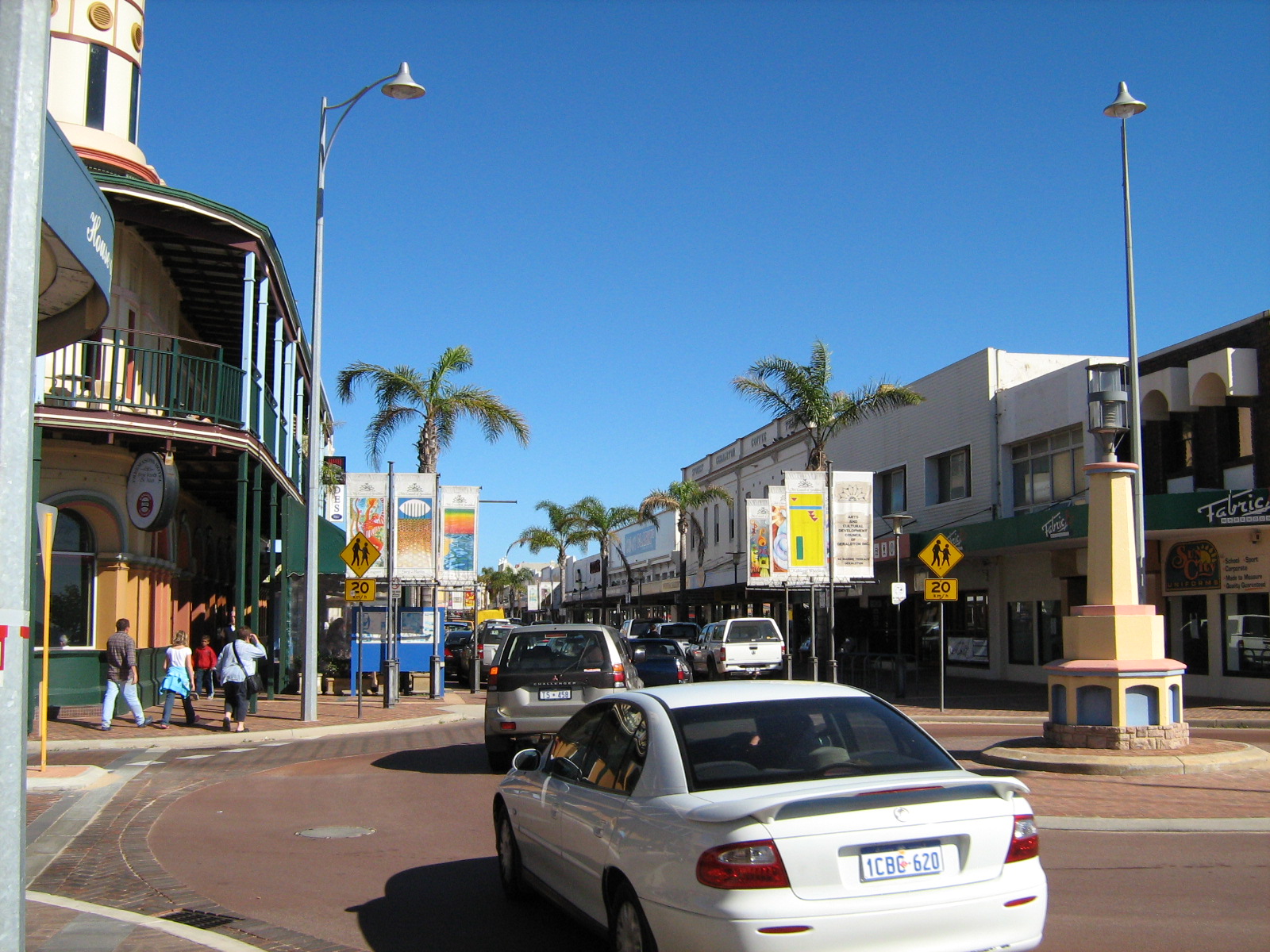
.jpg)
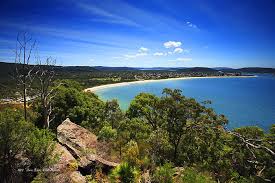
.jpg)

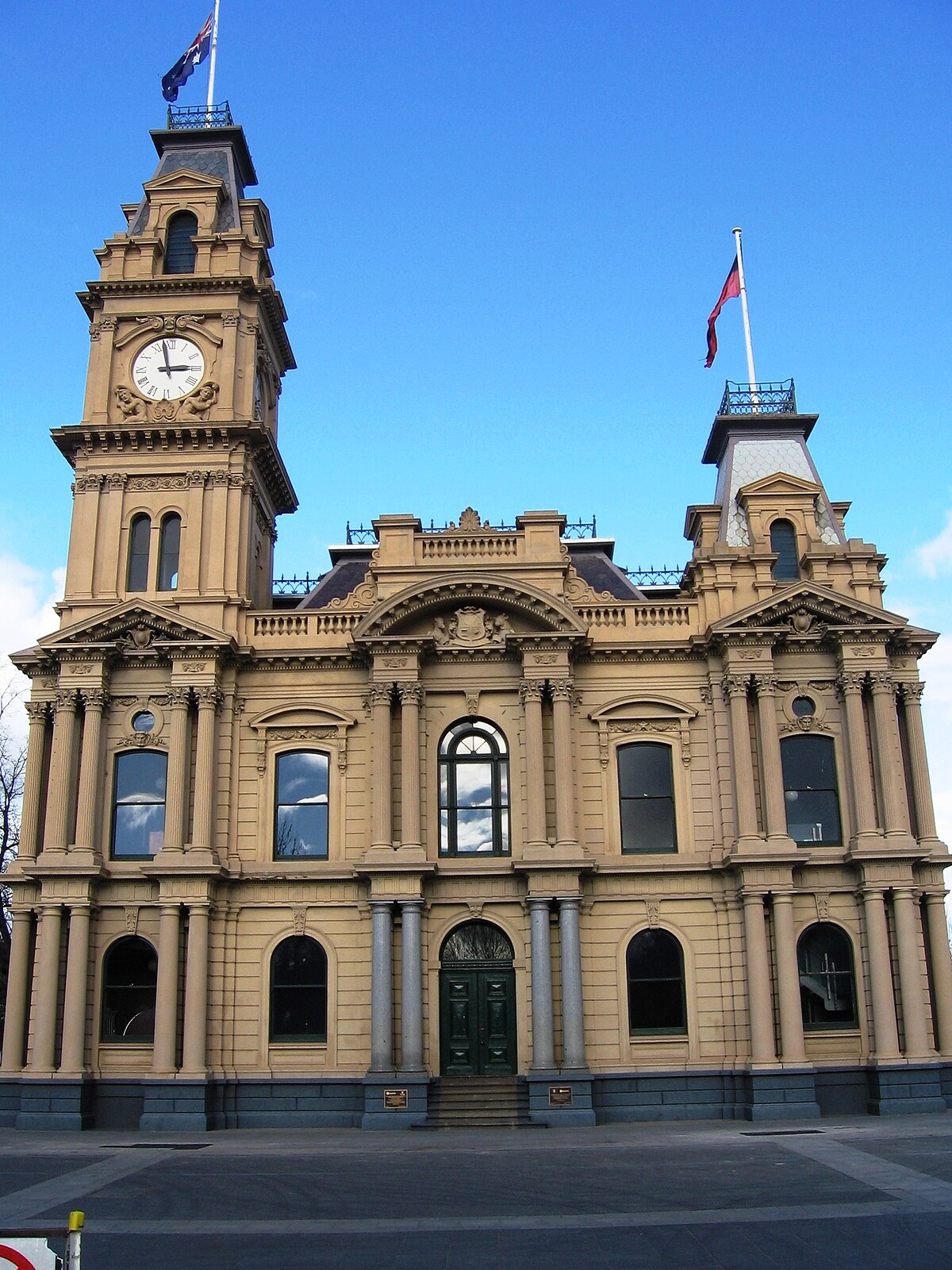

.jpg)


















